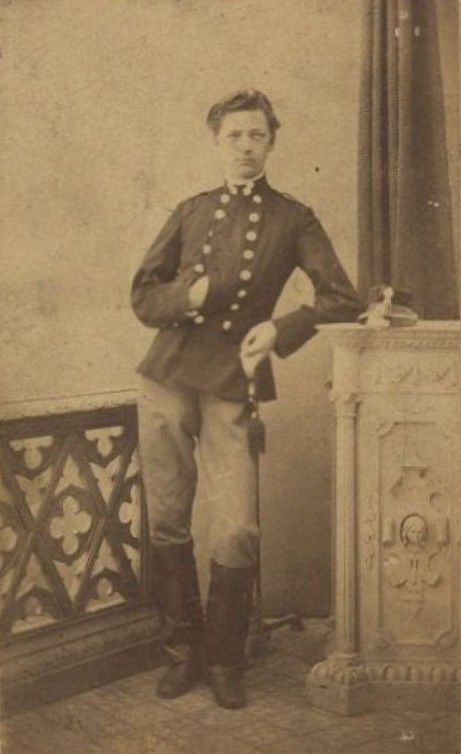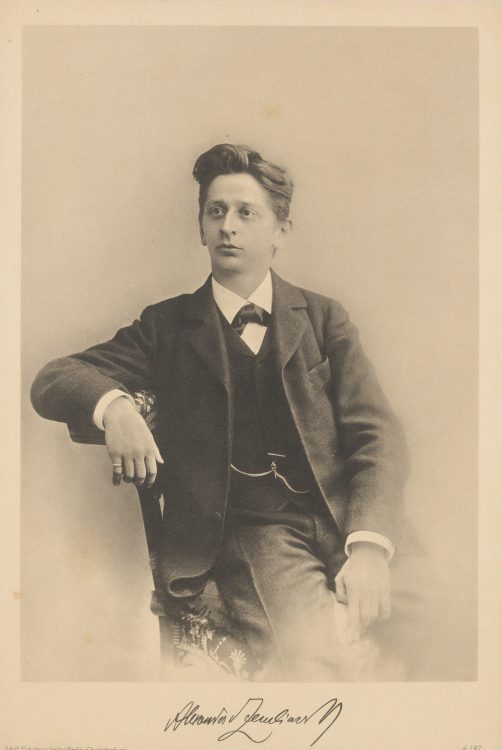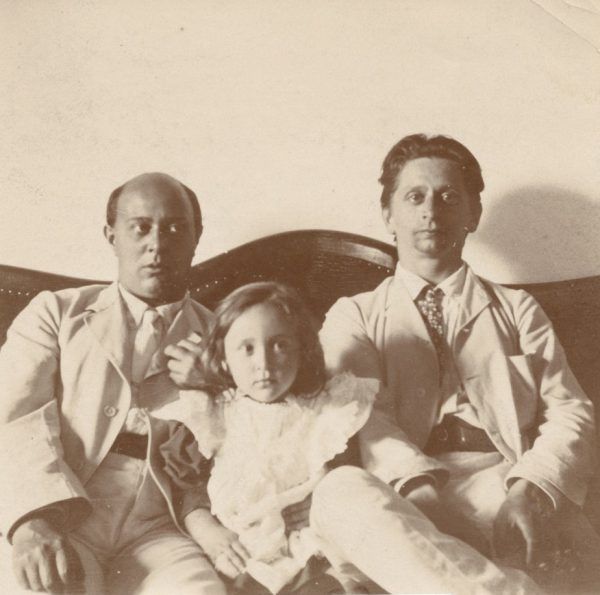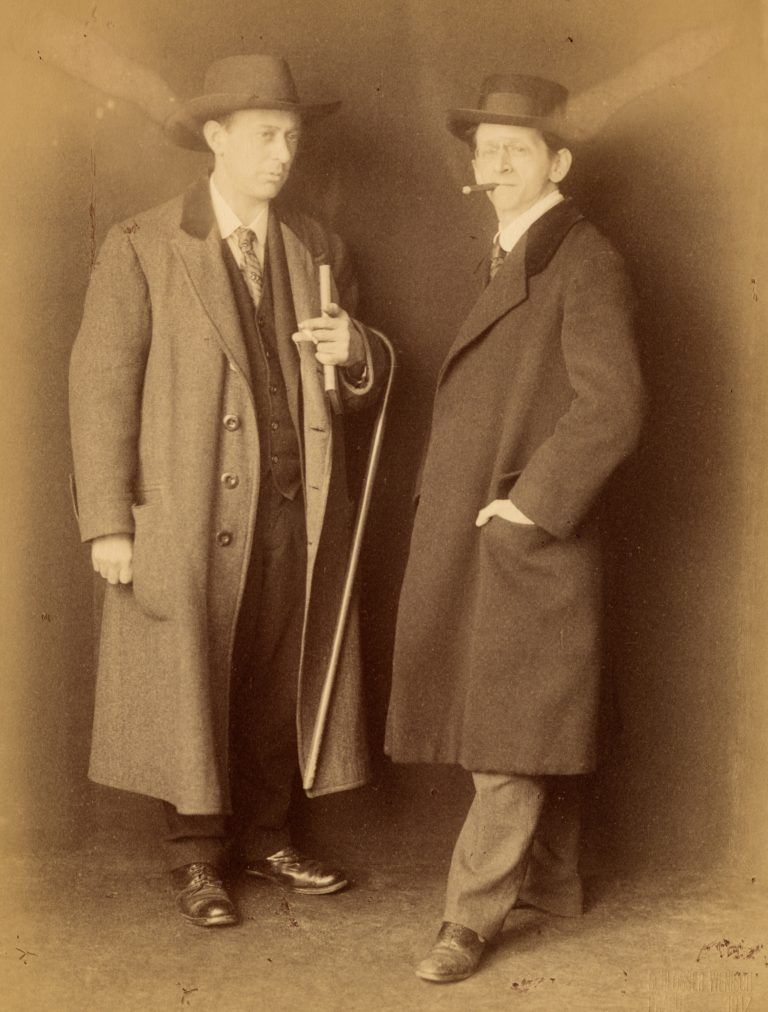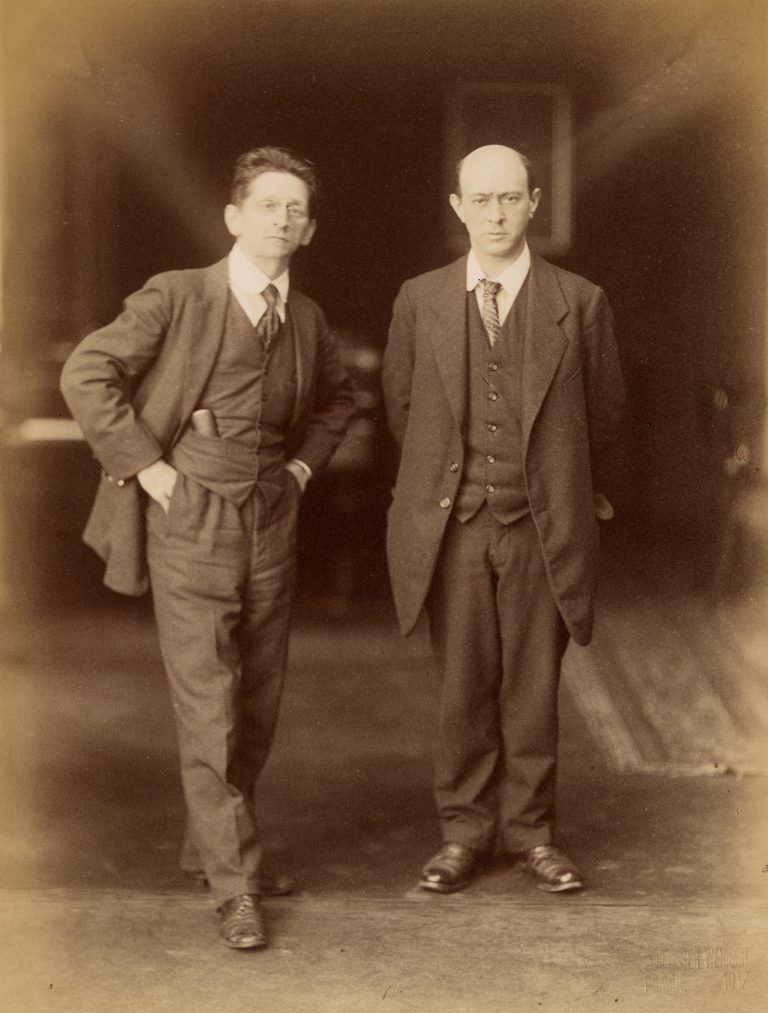Vienna Between Two Worlds
1871-1911

Vienna Between Two Worlds
1871-1911
“Austria, as Hermanowsky-Orlando states, ‘is the one and only country neighbouring the world’.”
W. G. Sebald, Unheimliche Heimat. Essays zur österreichischen Literatur, 1985
Alexander Zemlinsky was born in the Viennese district of Leopoldstadt, which was just as cosmopolitan as were his parents. His mother, Clara Semo (1848-1912) was Jewish, although she was probably also a Bosnian Muslim on her mother’s side. His father, Adolf von Zemlinsky (1845-1900) was Catholic by birth. Unusually, he converted to Judaism several months before his marriage to Clara on 8 January 1871, and would pen the sole written history of Vienna’s small Turkish-Israeli Jewish community, which had recently built a large synagogue inspired by the Alhambra of Granada. He wrote the work in German and Ladino, the language of the Jews of Spain, who had been expelled in 1492.
Although Alexander Zemlinsky attended Sephardic school for two years as a child, he soon enrolled in a public school, followed by the Conservatory when he was fifteen. Music then took precedence over all else, and his precocious gifts became apparent. Johannes Brahms (1833-1897) was the first to notice Zemlinsky’s abilities, and in 1896 recommended him to the publisher Simrock, which published his Trio for piano, clarinet and cello Op. 3 in 1897.
Zemlinsky’s early years as a musician were shaped by Brahms’ influence. The elder composer’s death on 3 April 1897 marked the end of an era, much as Gustav Mahler’s departure from Vienna would do ten years hence. On the same day in 1897, Gustav Klimt (1862-1918) led forty other artists in a mass departure from the Austrian Artists’ Society, thereby at least partially breaking away from official art.
Five days after this unexpected Secession, on 8 April, the Emperor placed Mahler at the head of the Hofoper, the city’s most prestigious opera, a position he held for the next ten years. Zemlinsky would find a new mentor in Mahler. An appointment of a different sort and of equal importance also took place in Vienna on 8 April: Karl Lueger (1844-1910) became the first anti-Semitic mayor of a European capital, following two years of postponement on the Emperor’s part despite Lueger’s lawful election. The following year, the president of the Austrian Christian Social Party inaugurated a theatre that was forbidden to Jews. This theatre would become the Volksoper, where Zemlinsky was hired in 1904 after bankruptcy opened it to non-Christian artists and audience members.
In 1905 Zemlinsky posed in front of the Volksoper with the singer Ida Guttmann (1880-1929), who would become his wife two years later. In the meanwhile he accepted as his student Alma Schindler (1879-1964); the two fell in love and began a tumultuous affair. Alma Schindler later married Gustav Mahler, Zemlinsky’s mentor and future protector.
In Vienna with Arnold Schönberg
A little more than a month before he met Alma Schindler, on 22 January 1900, Gustav Mahler premiered Zemlinsky’s opera Es war einmal… (Once upon a time…), at the Hofoper. Zemlinsky had composed the work, which is based on a play by the Danish poet and playwright Holger Drachman (1848-1906), three years earlier. This was the only time in Mahler’s career that he conducted a work by a contemporary Austrian composer. The opera was given twelve times and earned critical and popular success. Zemlinsky’s dramatic sense was applauded, and as he had also recently begun to conduct, he earned the nickname “Mahler junior”.
The death of his father in 1900 meant that Zemlinsky became his family’s breadwinner, which forced him to accept a position at the Carltheater. He complained to his mother about constantly having to conduct the same operettas there. His new position at the Volkstheater in 1904 gave him more latitude, and in November of that year he was finally able to inaugurate the Vereinigung schaffender Tonkünstler in Wien (Association of Creative Musicians), which he had co-founded with Arnold Schönberg, and of which Mahler was the honorary president. The Association was viewed as the musical equivalent of the Secession. Its goal was to promote contemporary music, and its concerts were often marked by scandal.
Indeed, when Schönberg’s Pelleas et Melisande, based on the play by Maurice Maeterlinck (1862-1949), premiered on 25 January 1905, the great outrage it caused eclipsed Zemlinsky’s Die Seejungfrau (The Mermaid), which was based on a fairy tale by Hans Christian Andersen (1805-1875) and premiered at the same time. To a certain extent, this event foreshadowed the disparity between the respective fortunes of the two composers.
But for many years the paths of Zemlinsky and Schönberg were linked by musical and family connections. The exact date that Schönberg became Zemlinsky’s student is unknown, but it was probably in the mid-1890s, since Schönberg collaborated with his mentor on the composition of his first opera, Sarema, die Rose vom Kaukasus (Sarema, the Caucasus Rose), which was first performed in Munich’s Bavarian National Opera in October 1897. Born in the Leopoldstadt district like Zemlinsky, Schönberg made the decision to renounce Judaism in 1898, a year before Zemlinsky; both composers immediately converted to Protestantism.
Mathilde, Zemlinsky’s sister, was the next to convert, a week before her marriage in October 1901 to Arnold Schönberg and a year ahead of the birth of Gertrude, their daughter. In the summer of 1903 the brothers-in-law moved into the same story of a building near the Volksoper, where Zemlinsky was hired the following year. Both of them became arrangers for Universal, and gave private lessons to a number of young students including Anton Webern (1883-1945), Alban Berg (1885-1935), and Heinrich Jalowetz (1882-1942).
Schlosser Wenisch, Arnold Schönberg, Alexander Zemlinsky (1917). © Arnold Schönberg Center – Vienna

